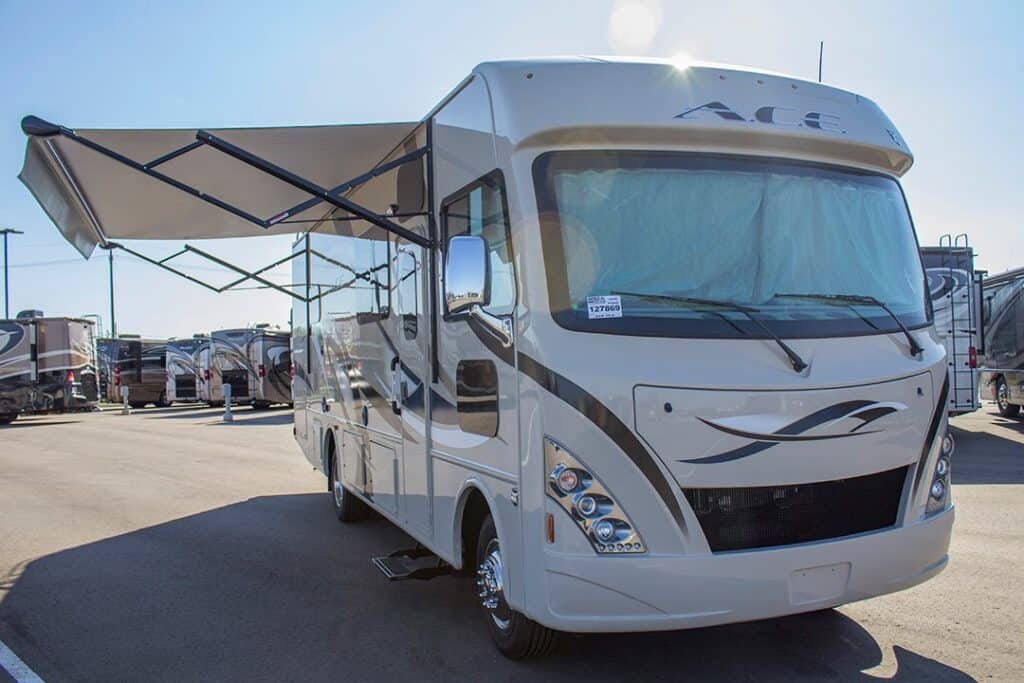
5 Myths About Class A RVs
If you are looking into purchasing or even renting a Class A RV, plan to put some forethought and research into your selection before making your final decision.
During your search, you’ll hear and read all sorts of information about these types of motorhomes. Hopefully, what you gather will be accurate, but there will inevitably be misinformation that will steer you away from the facts.
The following are five common myths about Class A RVs that you may come across in your research. Knowing the truth about these misconceptions may help put you in the driver’s seat of a Class A RV. On the other hand, you may start to look into other RVs that are a better fit for you and your traveling crew.
What exactly is a Class A RV?
Class A RVs are motorhomes that resemble tour buses. They are the largest type of RV available on the market and offer both gasoline and diesel options. These self-contained, climate-controlled units include a cockpit (driver’s area), living room, kitchen, bedroom, and bathroom.
Many Class A RVs have slideouts, ample basement storage, and can be outfitted with all the luxuries of home, including tile floor, granite countertops, washer/dryer, his and her sinks, walk-in closet, you name it. Some RVers choose to tow a car behind it, as well.
1. All Class A RVs are large.
This is partially true. Class A RVs can be giant homes on wheels, but they can also be relatively compact. Size ranges from 26 to a whooping 45 feet in length. The average size of a Class A is around 33′ long, around 12 to 13 feet tall, and about 9 feet wide. In regards to weight, these motorhomes can weigh anywhere from 13,000 to 30,000 pounds.
Currently, the smallest Class A RV up for sale is Thor’s Axis RUV and Vegas RUV, both with models measuring 24.1 feet long. The RUV stands for Recreational Utility Vehicle. Thor Motor Coach website notes, “The RUV’s eponym is an SUV, or sports utility vehicle. Just like an SUV these motorhomes are easily maneuverable, which means less stress while behind the wheel.”
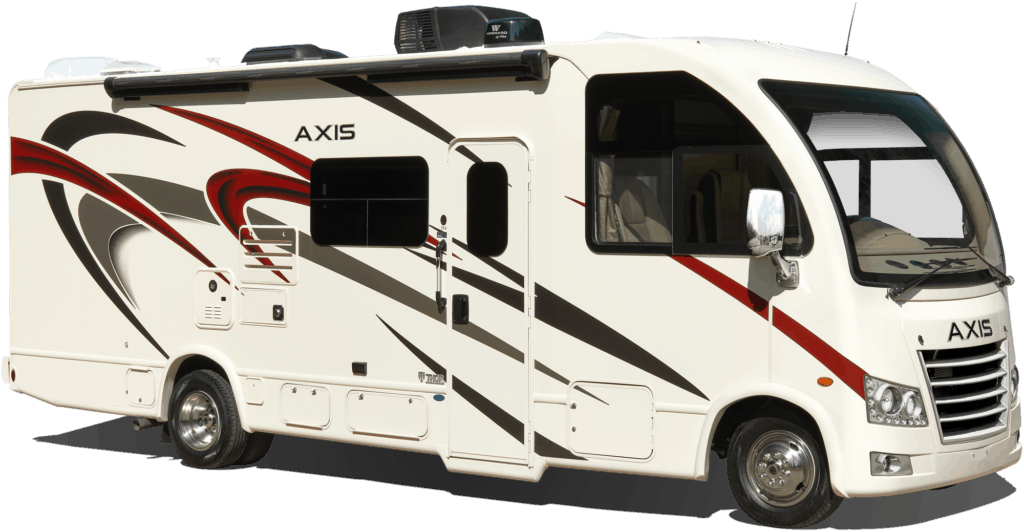
2. Class A RVs are the worst with fuel efficiency.
Again, this is not entirely true. Class A motorhomes are heavy and large by design, which puts them at a disadvantage regarding fuel efficiency. With an average mpg of 7-13, Class A motorhomes are not ranked high compared to other types of RVs. However, manufacturers recognize customer preferences and have made many modifications to various models to improve fuel efficiency.
Fuel option plays a significant role in gas consumption. Despite its cost, diesel engines in RVs tend to outperform gas engines in power and efficiency. The Thor Palazzo diesel RV, for example, maxes out at 12.9 mpg in ideal driving conditions. This is in comparison to a Ford V10 which ranges from 6 to 10 mpg.
RVers that like to explore more of a location will bring along their tow vehicle. In that case, they’ll use their Class A as a means to get to the campground or boondocking site and use their car to do the sightseeing. Not only are they able to save on fuel costs with minimal use of the RV, but they can also easily maneuver around and travel to many more places in their tow vehicle.
The following article from Camper Report, “The Giant Guide to Motorhome Gas Mileage (With 21 Examples),” breaks down the average miles per gallon of various motorhomes. Tips on how to reduce fuel consumption are included like packing lighter, keeping up with maintenance, using cruise control, and reducing speed.
3. It is difficult to drive a Class A RV.
One of the biggest fears surrounding RVing, especially for newbies, is driving the rig. This is especially true in the case of Class A RVs. As normal as this feeling is for a number of people, fear shouldn’t stop you from making the jump to purchase or rent a Class A RV. Like anything new, there is a learning curve to driving these motorhomes.
Before hitting the open road, it’s a good idea to practice skills like backing up, stopping, turning, and parking in an empty lot. Businesses like RV Driving School provide in-person training in locations all over the U.S. You’ll receive a certificate upon completion. (Note: Some insurances will accept this certificate and discount your coverage costs.)
There are a few aspects that every new driver should take into account when getting behind the wheel of a Class A. Even though you are sitting higher than the typical motorist, you should be extra cautious with your surroundings, using your side mirrors and backup camera to see all around your RV.
It’s also important to be aware of your speed and keep a safe distance from the vehicle in front of you. Regardless of your quick reactions, motorhomes are much slower to stop, and plenty of time and room is needed to come to a complete halt. Also, you should know the exterior height of your coach so you can safely travel under bridges. RV-specific GPS routing on the RV LIFE App and RV LIFE Trip Wizard make it easier for Class A motorhome drivers to navigate safely.
The article, “Are Motorhomes Hard To Drive” offers more driving tips when it comes to handling motorhomes. The author cautions that even if you are comfortable driving your own car, be careful with driving a Class A because there are many differences. He details 10 major driving differences in the write-up.
RV enthusiast and YouTube influencers Izzy and MJ of Endless RVing feature a video on the basics of driving a Class A RV. They model several driving techniques and mention that safe driving happens way before you sit in the driver’s seat. It begins by thoroughly inspecting your RV’s exterior and interior first. Check out their beginner’s driving lesson below.
4. You need a special license to drive a Class A RV.
The short answer is no. The long answer is some states require a special license to drive an RV if it is over a certain weight or length. According to current DMV laws all across the country, if you are driving a vehicle that weighs under 26,000 pounds, you have the green light to drive with a standard driver’s license. Since Class A RVs teeter between 13,000 and 30,000, finding a unit below 26,000 pounds shouldn’t be a huge issue.
The following is a list, courtesy of Motorhomes 2 Go, of special licensing required by states to drive a Class A RV:
States that require a commercial driver’s license (CDL) for motorhomes weighing over 26,000 pounds.
- Washington DC
- Hawaii
States that require a commercial driver’s license (CDL) for motorhomes longer than 45 feet.
(Individuals carrying personal possessions or family members are exempt from CDL requirements.)
- Wisconsin
- Indiana
States that require a non-commercial class B driver’s license for motorhomes based on gross vehicle weight rating (GVWR) or length.
- California- motorhomes over 40 feet
- Kansas, Maryland, North Carolina, Nevada, Pennsylvania, Texas, and Wyoming- motorhomes with a GVWR over 26,000 pounds
- Illinois- motorhomes over 16,000 pounds
States that require an R endorsement for motorhomes based on gross vehicle weight rating (GVWR) or towing capacity.
- New York- RVs with a GVWR above 26,000 pounds
- Michigan- motorhomes pulling any additional unit behind such as a trailer or boat
5. Class A RVs are meant to be used in campgrounds only.
Contrary to this myth that many believe, Class A motorhomes are indeed suited for the wilderness. They may not be capable of traversing the rugged, tight spots of some off-the-grid locations, but plenty of RVers have taken their Class A RV to more obtainable non-developed camping spots in deserts, national forests, along beach fronts, and up mountains.
Class A RVs have auto-leveling systems that afford them the ability to sit stable on uneven ground. Bigger holding tanks give these RVers the upper hand to dry camp for longer periods. Plus, many Class A models offer a slew of amenities and luxurious options that make roughing it seem more like glamping it.
More resources on Class A RVs
If you are looking for more information on Class A RVs, a simple Google search will open up a wide array of resources. The following are sources that offer comprehensive material on this type of motorhome, no myths attached. RV Masterclass, for example, provides an in-depth online course about motorhomes, including how to drive your RV like a pro and routine maintenance procedures.
It’s always a good idea to mix in RVer perspectives with your research. An online source that allows many RVers a platform to voice their opinions, concerns, and suggestions is iRV2 forums. Discussions are organized by category, and you can chat with others about Class A RVs.


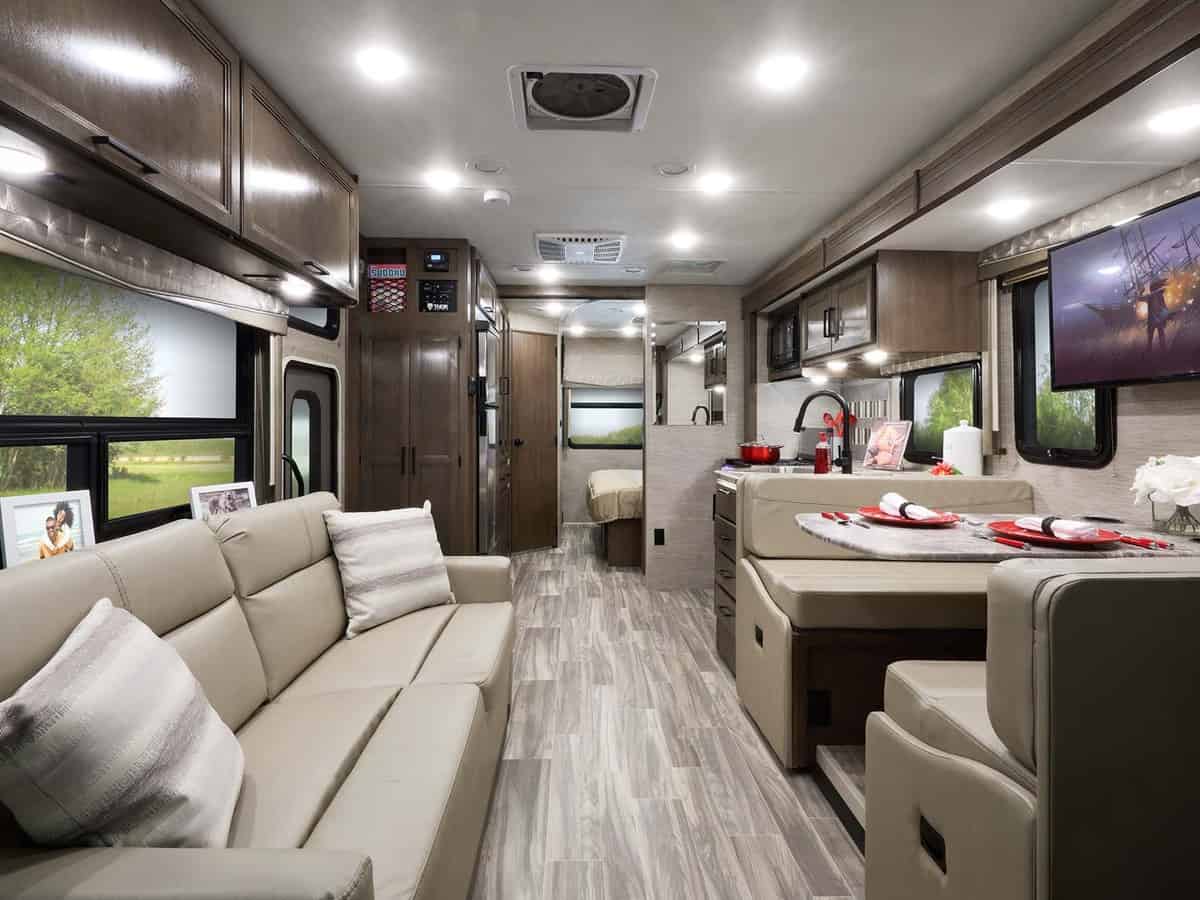
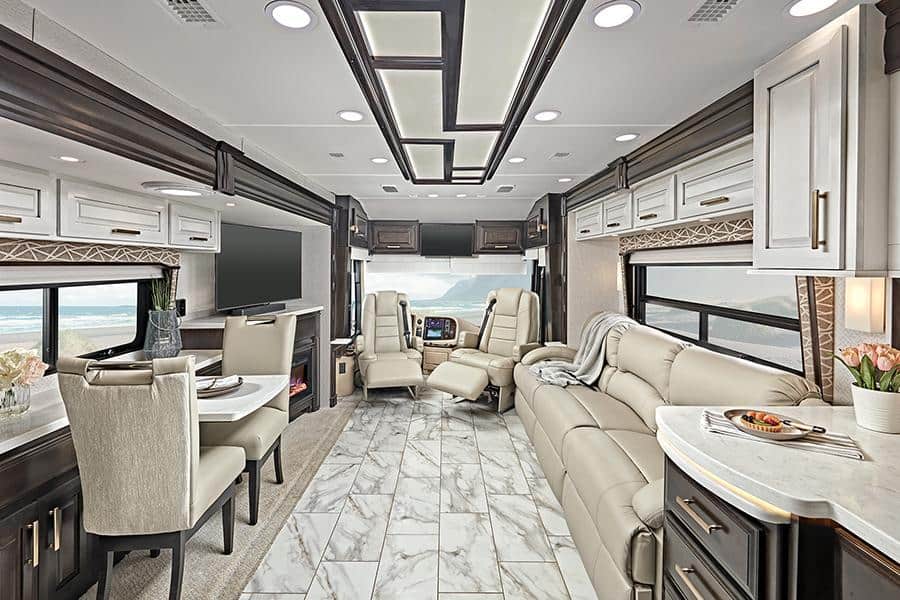
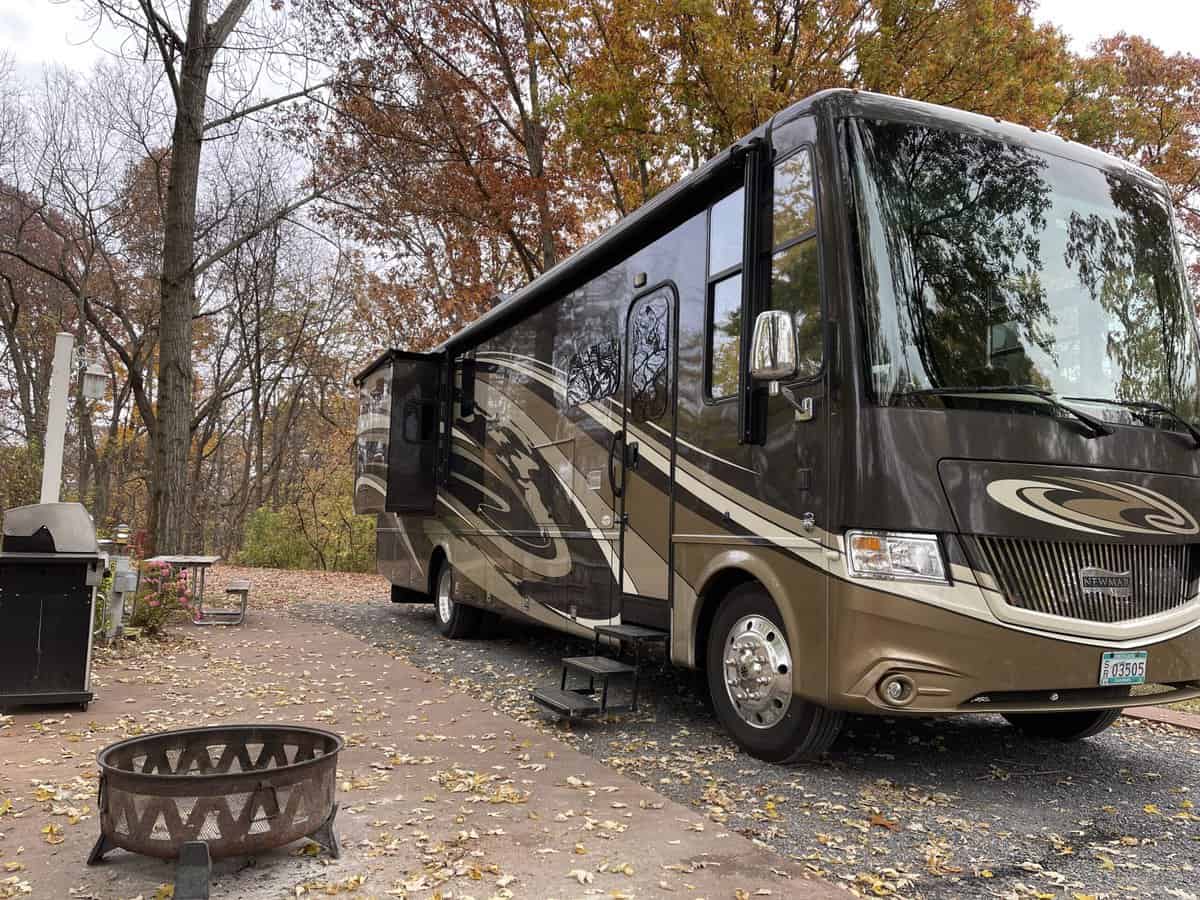
« Natalie Flores-Henley and her husband, Levi Henley, workamp around the country in their 26-foot motorhome. »
Please, can you telle me what is it, the brand and the model and the year ? With your experience, I am sure it is a good one. Because I would like to buy one.
Thank you.